Our team is highly trained and experienced in servicing and producing all types of steel supplies. Need help or have a question?
sales@abrasionresistantpipe.com
Tel.: +8621-3378-0199
Our team is highly trained and experienced in servicing and producing all types of steel supplies. Need help or have a question?
sales@abrasionresistantpipe.com
Tel.: +8621-3378-0199

U-shaped heat exchanger tubes are heat exchange tubes that are bent into a U-shape, as described in source.
U-shaped heat exchanger tubes are heat exchange tubes that are bent into a U-shape, as described in source.
The semi-finished product for U bend tubes are heat exchanger tubes, manufactured and supplied according to DIN 28180 and ASTM A179.
Tubes for heat exchangers are made of steel according to:
| Standard | Application |
| ASTM A179 | Seamless Cold-Drawn Low-Carbon Steel Heat-Exchanger and Condenser Tubes |
| ASTM A192 | Seamless Carbon Steel Boiler Tubes for High-Pressure Service |
| ASTM A210 | Seamless Medium-Carbon Steel Boiler and Superheater Tubes |
| ASTM A213 | seamless Ferritic and Austenitic Alloy-Steel Boiler, Superheater, and Heat-Exchanger Tubes |
| ASTM A334 | Seamless Steel Pipe for Low-Temperature Service and other Applications with Required Notch Toughness |
| JIS G3461/2 | carbon steel tubes used for heat exchange in boilers, heat exchangers, condensers, and similar equipment |
| EN10216-1/2 | specified the standard of cold processed precision steel tubes in a wide range of sizes |
| DIN17175 | seamless tubes for high-pressure and high-temperature applications, specifically for boilers and heat exchangers |
| Standard | Grade | Chemical Components (%) | Mechanical Properties | ||||||||||
| C | Si | Mn | P | S | Mo | Cr | V | T.S. (Mpa) | Y.S. (Mpa) | E.L. (%) |
Hardness (HRB) |
||
| ASME SA179 | SA179 | 0.06-0.18 | / | 0.27-0.63 | ≤0.035 | ≤0.035 | / | / | / | ≥325 | ≥180 | ≥35 | ≤72 |
| ASME SA192 | SA192 | 0.06-0.18 | ≤0.25 | 0.27-0.63 | ≤0.035 | ≤0.035 | / | / | / | ≥325 | ≥180 | ≥35 | ≤77 |
| ASME SA210 | A1 | ≤0.27 | ≥0.10 | ≤0.93 | ≤0.035 | ≤0.035 | / | / | / | ≥415 | ≥255 | ≥30 | ≤79 |
| C | ≤0.35 | ≥0.10 | 0.29-1.06 | ≤0.035 | ≤0.035 | / | / | / | ≥485 | ≥275 | ≥30 | ≤89 | |
| ASTM A333 /A334 | GR.1 | ≤0.30 | / | 0.4-1.06 | ≤0.025 | ≤0.025 | / | / | / | ≥380 | ≥205 | ≥35 | -45° |
| GR.6 | ≤0.30 | ≥0.10 | 0.29-1.06 | ≤0.025 | ≤0.025 | / | / | / | ≥415 | ≥240 | ≥30 | -45° | |
| GR.8 | ≤0.13 | 0.13-0.32 | ≤0.90 | ≤0.025 | ≤0.025 | / | / | 8.40-9.60 | ≥690 | ≥515 | ≥22 | -195° | |
U bend tubes for heat exchangers applied mostly in oil and gas plants, chemical and petrochemical plants, refineries, power plants and renewable energy plants. Low fin tubes can be supplied in the form of U bends.
U bent heat exchanger tubes are used in various industrial applications for heat transfer between fluids, such as in boilers and condensers. U bent heat exchanger tubes are made from a variety of materials including stainless steel, titanium, and copper alloys depending on the application and environmental factors. They are typically designed to withstand high temperatures and pressures and are used in both liquid and gas applications.
Both ends of the U-tube are fixed on the same tube plate, and the shell and heat exchange tubes are separated. This allows the tube bundle to freely expand and contract without generating temperature difference stress, which is a problem that can occur in other types of heat exchangers.
U-shaped heat exchanger tubes have a simple structure which makes them easy to manufacture and maintain. They are commonly used in shell and U-tube heat exchangers, which consist of a cylindrical shell with U-shaped tubes inside. The U-tube design allows for better heat transfer efficiency, and the compact size of the U-shaped tubes means that the heat exchanger can be very powerful despite its small footprint.
Overall, U-shaped heat exchanger tubes are a popular choice for many industrial applications due to their simplicity, efficiency, and compact size.
U-tubes are made of precision straight tubes. These precision straight tubes are completed after cold rolling and bright annealing. In order to meet the technical conditions of our customers, every step of the process is strictly controlled.
U-tubes are mainly divided into two categories according to materials: stainless steel U-tubes and alloy steel U-tube
a……………….The difference in length between two straight pipe sections
c…………..The tangent spacing of the outer wall of the elbow
Da…………nominal steel pipe outer diameter
E…………..The distance between the outer diameters of the two straight ends
f……………the distance between the ends of the two straight ends
l.………….. straight tube length
Lg…………. straight pipe section plus total length of pipe
Rm………..nominal bending radius
S………….nominal wall thickness
Smin…….The minimum wall thickness at the back of the elbow
t……………the bend deviates from the horizontal distance
So………..Standard minimum wall thickness

If requested by the customer, we add a straight pipe section with a minimum of 150mm according to the elbow.
Heat treatment is performed.
The computer controls the heat treatment furnace and records all the data.
The tube is filled with a protective gas – argon.
Outer diameter: 12.7-38 mm
The bending radius is from 1.5 times the outer diameter to 1250 mm. The outer diameter is over 28mm,
The minimum bend radius can be further discussed.
Straight pipe length is the shortest 1000mm
Straight pipe length up to 12000mm
The bending radius is below 1000mm and heat treatment is required.
Use a strong, and depending on the distance to the destination, choose an open or sealed wooden case with a maximum weight of 8,000kg.
The packing list should be packed in a plastic bag and placed in a wooden box for detailed review at the time of arrival – including all bend radii and pipe lengths.
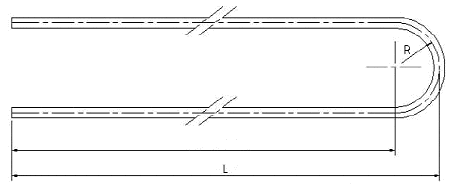 The semi-finished product for U bend tubes are heat exchanger tubes, manufactured and supplied according to DIN 28180 and ASTM A179. Tubes for heat exchangers are made of steel according to:
The semi-finished product for U bend tubes are heat exchanger tubes, manufactured and supplied according to DIN 28180 and ASTM A179. Tubes for heat exchangers are made of steel according to:
other types of steel can be supplied by agreement.
U bend tubes for heat exchangers applied mostly in oil and gas plants, chemical and petrochemical plants, refineries, power plants and renewable energy plants. Low fin tubes can be supplied in the form of u bends.
Post bending heat treatment by electrical resistance (Joule effect) is applied. The temperature is monitored and controlled during the process. It is possible to perform the heat treatment in a nitrogen atmosphere.
Heat Treatment Equipment
Sizes tolerances of U bend tubes are to fulfil the requirements of: ASTM A556 / 556M and DIN 28 179
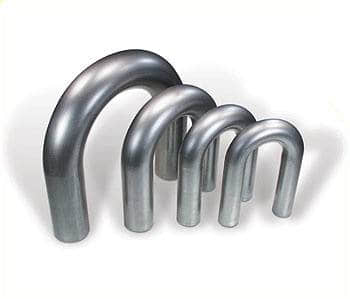
‘U’ bends are produced, controlled and measured fully in accordance with relevant standards.
Material / Grade
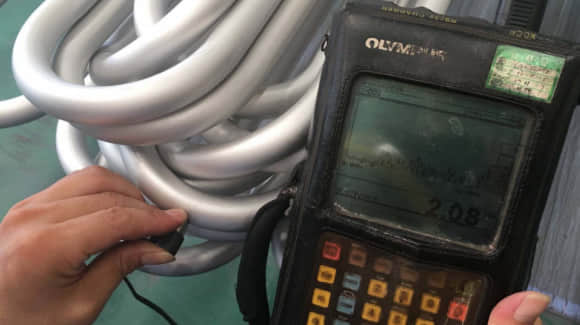 Here is a list for providing ovality, minimum wall thickness, bending radius, distance between legs, wall thinning of bending area and so on. Thus, we can figure out which kind of type would be our final choice for our engineering project.
Here is a list for providing ovality, minimum wall thickness, bending radius, distance between legs, wall thinning of bending area and so on. Thus, we can figure out which kind of type would be our final choice for our engineering project.
| Item | Condition (when) | Tolercance |
|---|---|---|
| Nominal bend radius ≤ 2 x nominal OD | less than or equal to 12% | |
| Ovality | 2 x nominal OD < Nominal bend radius ≤ 4 x nominal OD | less than or equal to 10% |
| Nominal bend radius > 4 x nominal OD | less than or equal to 5% | |
| Nominal bend radius ≤ 2 x nominal OD | 0.75 x nominal wall | |
| Mimimum wall thickness | 2 x nominal OD < Nominal bend radius ≤ 4 x nominal OD | 0.8 x nominal wall |
| Nominal bend radius > 4 x nominal OD | 0.9 x nominal wall | |
| Nominal bend radius ≤ 8" (200mm) | +/-3/64"(1mm) | |
| Bending Radius | 8" (200mm) < Nominal bend radius ≤ 16" (400mm) | +/-1/16"(1mm) |
| Nominal bend radius >16" (400mm) | +/-5/64"(1mm) | |
| Disrance between legs | Max 1/16"(1.5mm) | |
| Wall thinning of bending area | Max 17% | |
| Difference between leg lengths at the ends | Leg length ≤ 16' (4.88m) | +1/8"(3mm) |
| Leg length > 16' (4.88m) | +3/16"(5mm) | |
| Deviation from plane of bend | ≤ 3/16"(1.5mm) | |
| Flattening on bend | ≤ 10% nominal diameter | |
| Straight leg length | ≤5m | +1/8"(3mm) |
| >5m | +3/16(5mm) | |
| Total tube length including radius | ≤6m | +3/16(5mm) |
| >6m | +5/16"(8mm) |
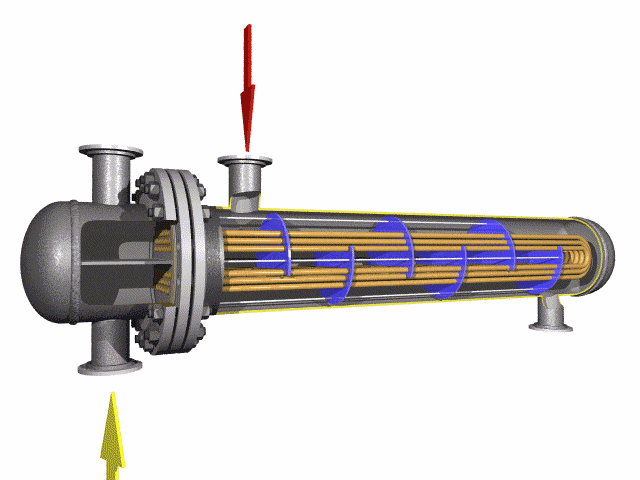
U-bend tubes are widely used in heat-exchanger systems.
Heat-exchanger equipment on the basis of seamless stainless U-tubes is essential in strategically important and critical fields — nuclear and petrochemical machine building.
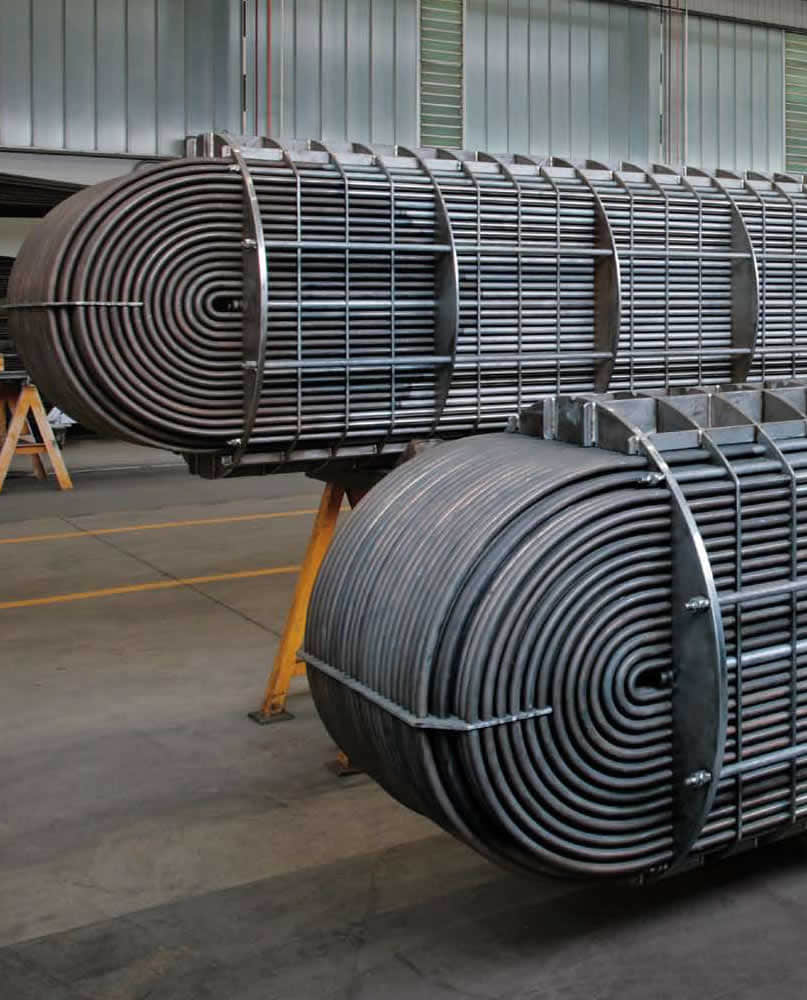
U tube heat exchanger is characterized by its simple structure, good tightness, convenient maintenance and cleaning, low cost, good thermal compensation performance and strong pressure bearing capacity. The U-tube heat exchanger has the largest heat exchange area under the same diameter. The main structure of U-shaped tube heat exchanger includes tube box, cylinder, head, heat exchange tube, nozzles, baffle, anti-shock plate and guide tube, anti-short circuit structure, support and other accessories of the shell and tube side, is the most commonly used in shell and tube heat exchanger.
Tube sheet
Tube sheet is one of the most important parts of shell – tube heat exchanger. The tube plate is the barrier between the shell side and the pipe side. When the heat exchange medium has no corrosion or slight corrosion, it is generally made of low carbon steel, low alloy steel or stainless steel. The connection form of tube-sheet and shell is divided into non-detachable and detachable types. The former is the connection between tube-sheet and shell in the fixed tube-sheet heat exchanger. The latter, such as U-shaped tube type, floating head type and stuffing box type and sliding tube plate type heat exchanger tube plate and shell connection. For removable connections, the tube plate itself is usually not in direct contact with the shell, but the flange is connected to the shell indirectly or is clamped by two flanges on the shell and the tube box.
Tube box
Most of the shell tube heat exchangers with larger shell diameters adopt tube and box structures. The tube box is located at both ends of the heat exchanger, which evenly distributes the fluid from the pipe to the heat exchanger tubes and gathers the fluid in the tubes together to send out the heat exchanger. In a multi-pipe shell, the casing can also change the flow direction. The structure of the tube box is mainly determined by whether the heat exchanger needs to be cleaned or whether the tube bundle needs to be divided.
Perhaps the best known use of tube sheets are as supporting elements in heat exchangers and boilers. These devices consist of a dense arrangement of thin walled tubes situated inside an enclosed, tubular shell. Tubes are supported on either end by sheets which are drilled in a predetermined pattern to allow the tube ends to pass through the sheet. The ends of the tubes which penetrate the tube sheet are expanded to lock them in place and form a seal. The tube hole pattern or “pitch” varies the distance from one tube to the other and angle of the tubes relative to each other and to the direction of flow. This allows the manipulation of fluid velocities and pressure drop, and provides the maximum amount of turbulence and tube surface contact for effective Heat Transfer.
In cases where it is critical to avoid fluid intermixing, a double tube sheet can be provided. The design of tube sheets is a fairly precise and complex process; the exact number of tubes needs to be established and a pattern of holes calculated to spreads them evenly over the tube sheet surface. Large exchangers may have several thousand tubes running through them arranged into precisely calculated groups or bundles. Sheet design and production is largely automated these days with computer software (like CAD) performing the calculations and the tube sheet drilling done on computer numerical control (CNC) machines. In this design, the outer tube sheet is outside the shell circuit, virtually eliminating the chance of fluid intermixing. The inner tube sheet is vented to atmosphere so any fluid leak is easily detected. Duwa Piping factory drilling department has professional drilling equipment and working team, we can provide the best quality tube sheet for you.
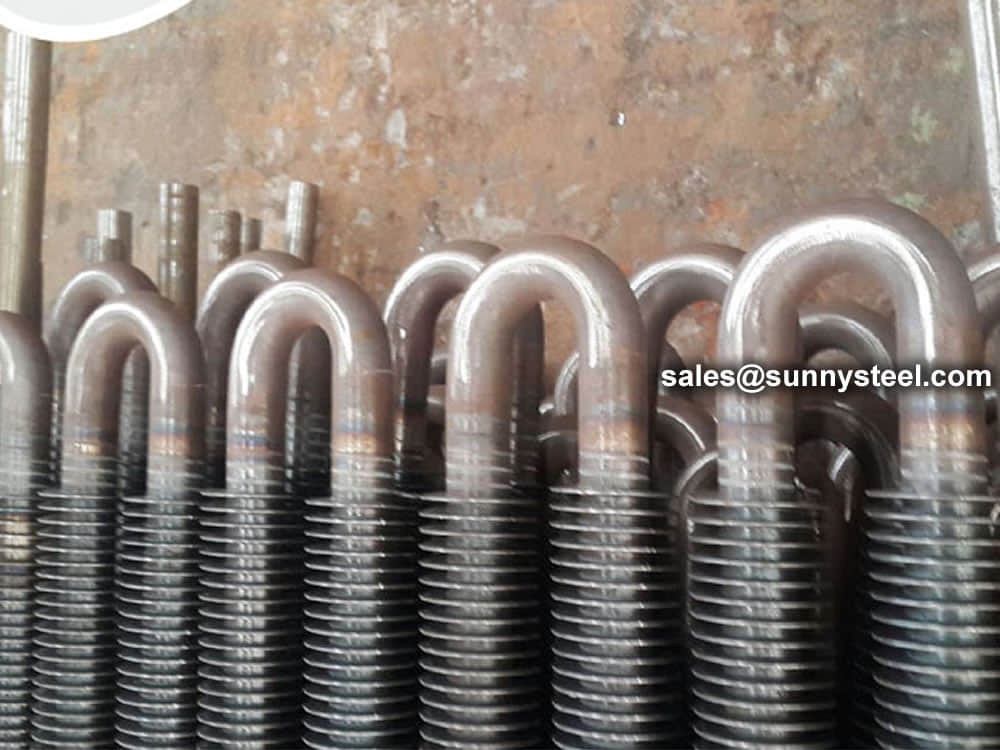
Fin tubes are used in applications involving the transfer of heat from a hot fluid to a colder fluid through a tube wall. Furthermore, finned tubes are used when the heat transfer coefficient on the outside of the tubes is appreciably lower than that on the inside.
Before their shipment, we will conduct a comprehensive inspection. The inspection contains: size, thickness, length, radius and marking.
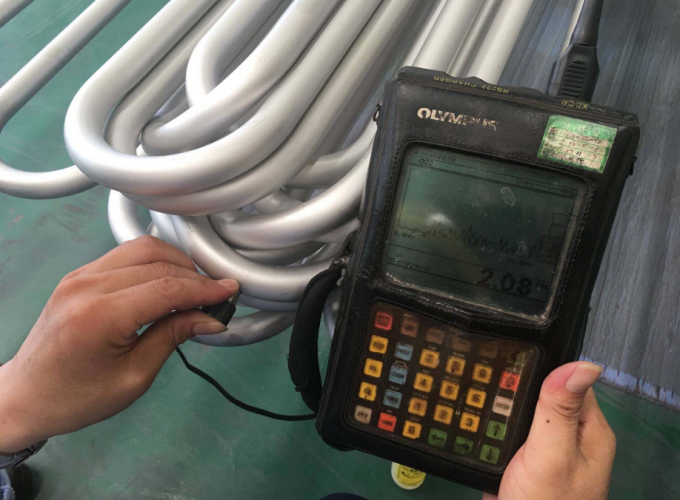
Size inspection
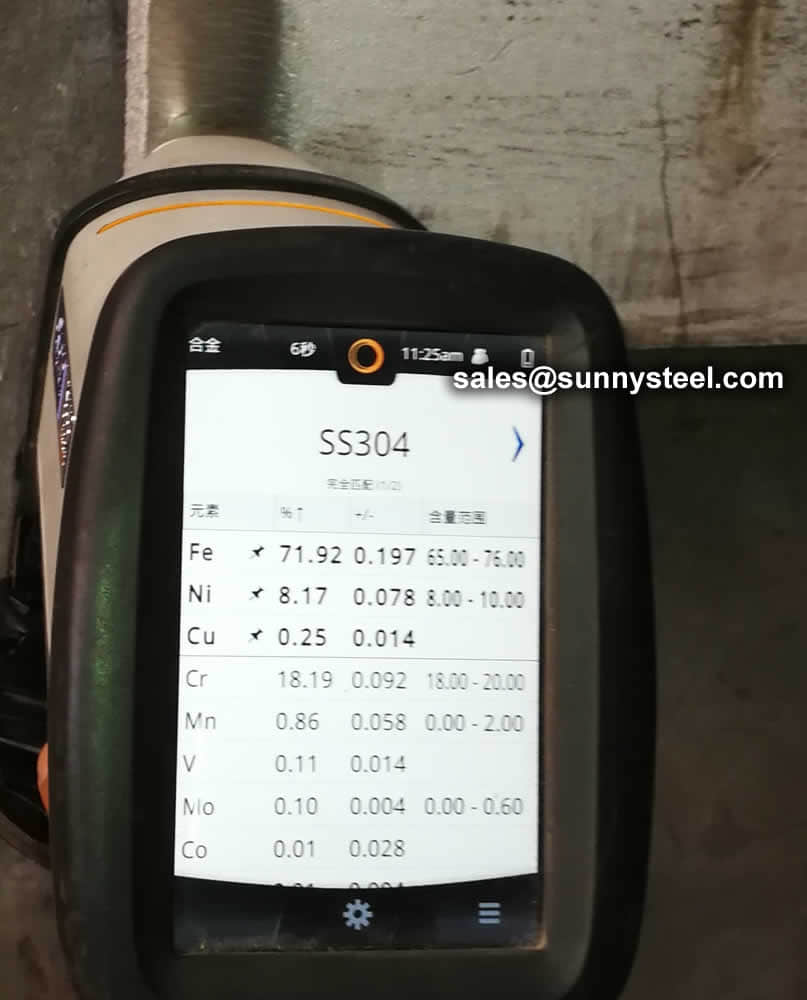
PMI test
Any type of packing U bend tubes is available according to customer need to worldwide destinations.
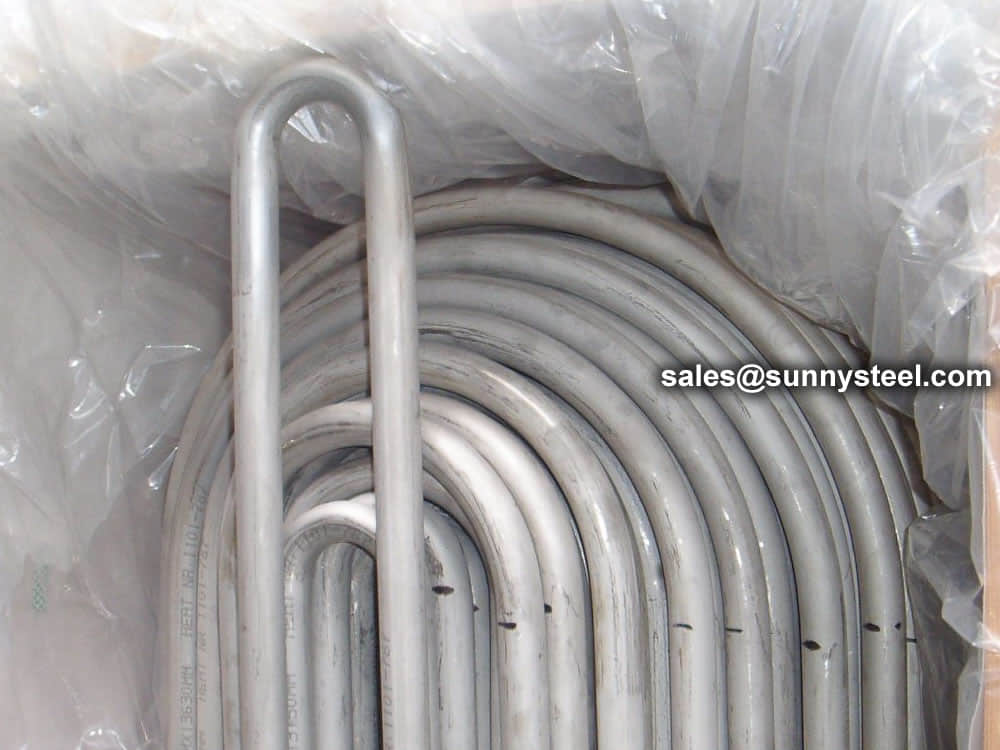
Stainless steel U bend tubes
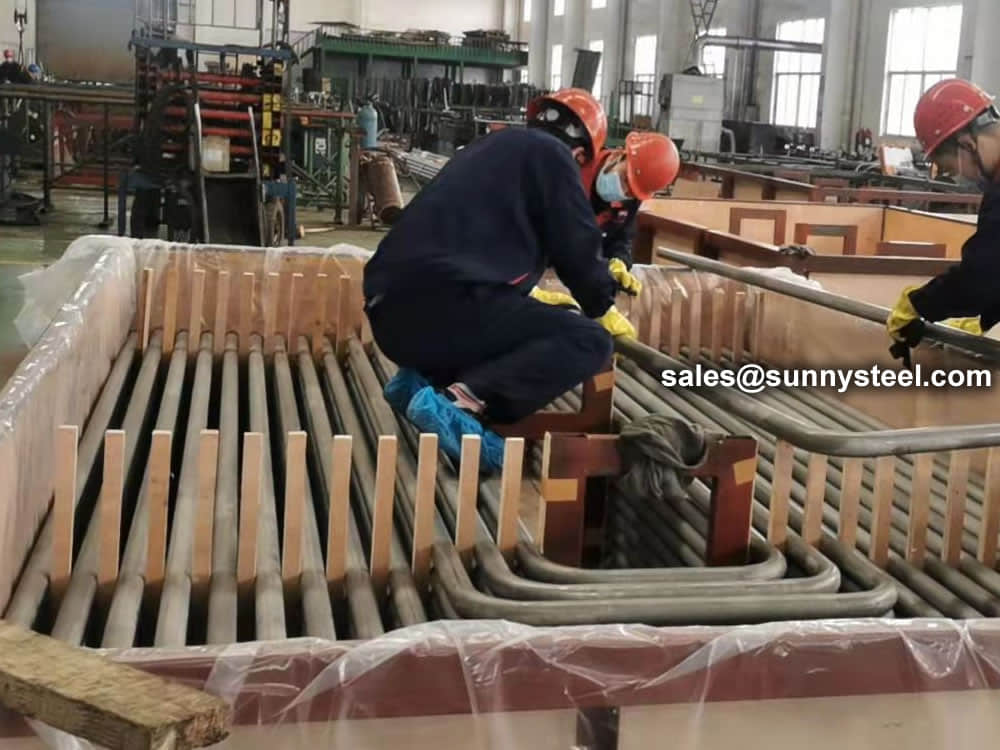
SA 213 TP347H stainless tubes
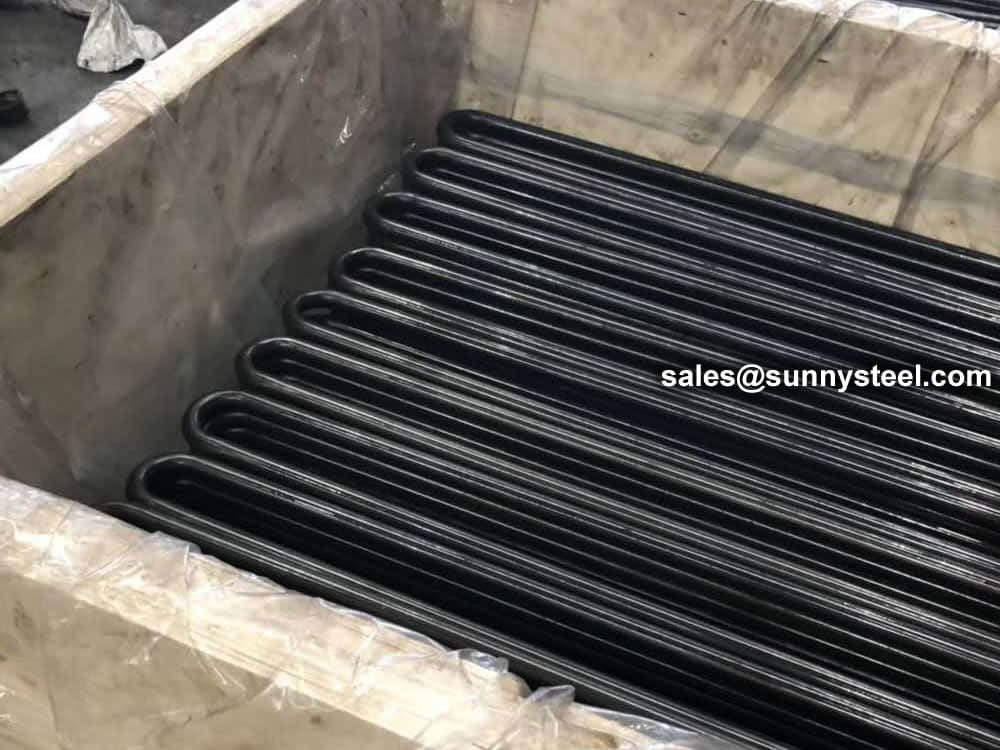
ASTM A179 U bend tubes
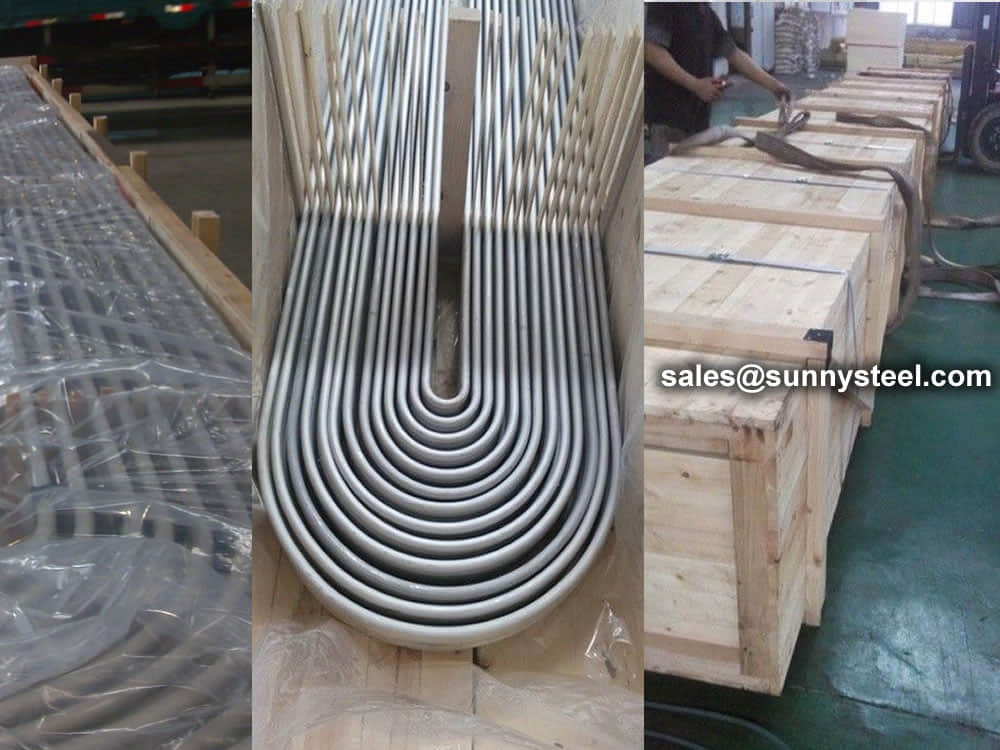
U bend tubes are packed in wooden cases
Need to inquire about our products? Fill out the form below and our staff will be in touch!
Q: How long is your delivery time?
A: The delivery time of customized products is generally 25 35 days, and non customized products are generally shipped within 24 hours after payment.
Q: Do you provide samples? Is it free?
A: If the value of the sample is low, we will provide it for free, but the freight needs to be paid by the customer. But for some high value samples, we need to charge a fee.
Q: What are your payment terms?
A: T/T 30% as the deposit,The balance payment is paid in full before shipment
Q: What is the packaging and transportation form?
A: Non steaming wooden box and iron frame packaging. Special packaging is available according to customer needs. The transportation is mainly by sea.
Q: What is your minimum order quantity?
A: There is no minimum order quantity requirement. Customized products are tailor made according to the drawings provided by the customer.